A constant force F=m2g/2 is applied on the block of mass m1 as shown in Fig. The string and the pulleys are light and the surface of the table is smooth. What is the acceleration of m1?

(m2g/2)−m2g=(m1+m2)a
a=−m2g/2(m1+m2).
Topper's Solved these Questions
- DYNAMICSBOOK - ICSECHAPTER - DYNAMICSEXERCISE - SHORT ANSWER QUESTIONS WITH ANSWERES
43 Videos
- DYNAMICSBOOK - ICSECHAPTER - DYNAMICSEXERCISE - SHORT ANSWER QUESTIONS WITH ANSWERS
12 Videos
- DYNAMICSBOOK - ICSECHAPTER - DYNAMICSEXERCISE - VERY SHORT ANSWER QUESTIONS
60 Videos
- DIMENSIONSBOOK - ICSECHAPTER - DIMENSIONSEXERCISE - SELECTED PROBLEMS (FROM CONVERSIONS OF ONE SYSTEMS OF UNITS INTO ANOTHER)
9 Videos
- FRICTIONBOOK - ICSECHAPTER - FRICTIONEXERCISE - Selected problems
30 Videos
Similar Questions
A constant force F=m2g/2 is applied on the block of mass m1 as shown in fig. The string and the pulley are light and the surface of the table is smooth. The acceleration of m1 is :
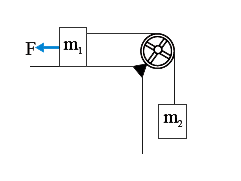
View SolutionA constant force F=m2g/2 is applied on the block of mass m1 as shown in fig. The string and the pulley are light and the surface of the table is smooth. The acceleration of m1 is :

View Solution
Knowledge Check
Three blocks of masses m1,m2 and M are arranged as shown in figure. All the surfaces are fricationless and string is inextensible. Pulleys are light. A constant force F is applied on block of mass m1. Pulleys and string are light. Part of the string connecting both pulleys is vertical and part of the strings connecting pulleys with masses m1 and m2 are horizontal.

(P)Accleration of mass m1(1)Fm1(Q)Acceleration of massm2(2)Fm1+m2(R)Acceleration of mass M(3)zero(S)Tension in the string(4)m2Fm1+m2APQRS(A)2234BPQRS(B)2134CPQRS(C)2241DPQRS(D)2131
A constant force F=m_2g/sisappliedontheblockofmassm_1asshown∈figure.Thestr∈gandthep≤––––yarelightandthesurfaceofthetab≤issm∞th.F∈dtheae≤rationofm_1
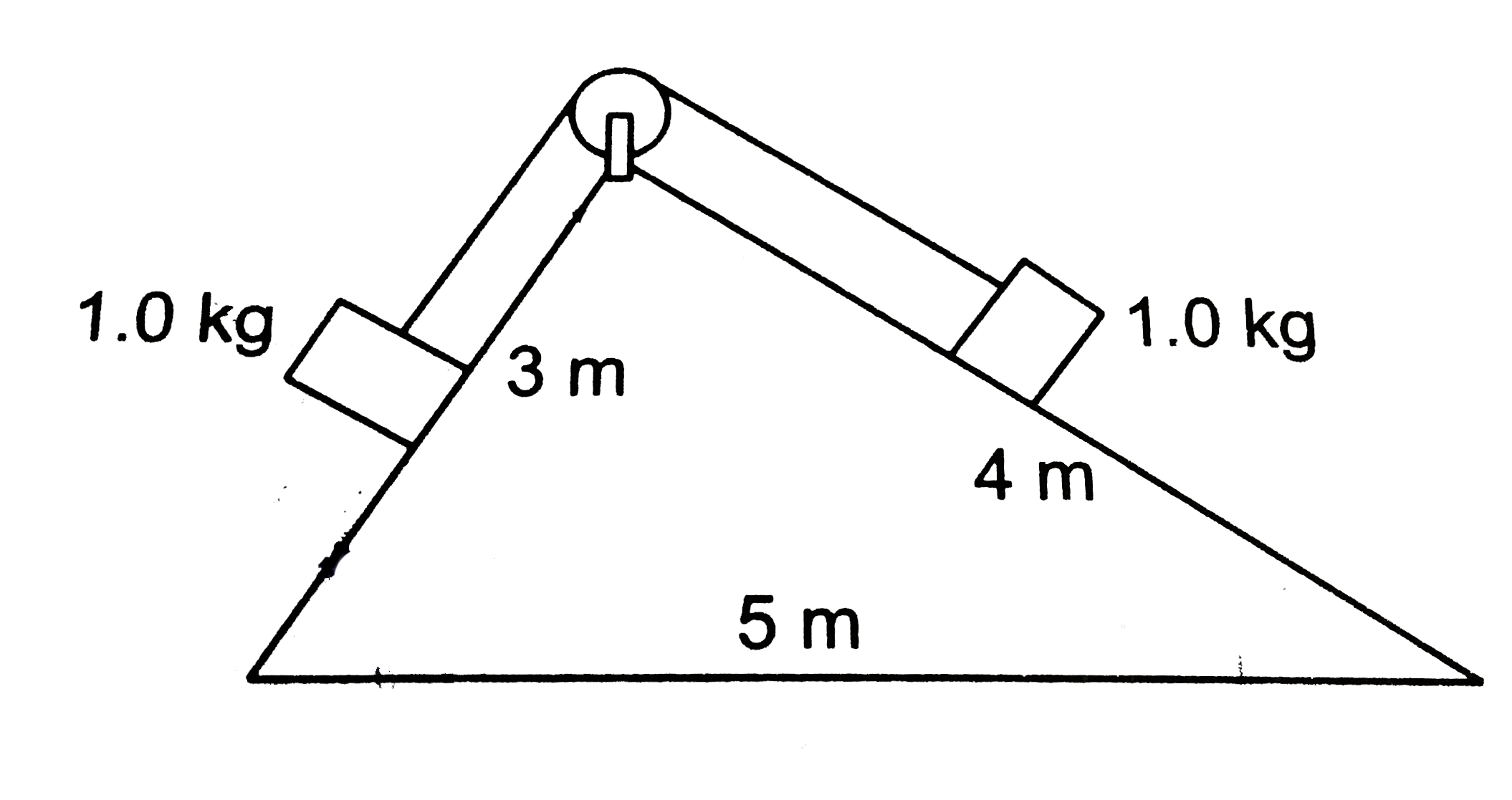
View SolutionThree blocks of masses m1,m2 and M are arranged as shown in figure. All the surfaces are fricationless and string is inextensible. Pulleys are light. A constant force F is applied on block of mass m1. Pulleys and string are light. Part of the string connecting both pulleys is vertical and part of the strings connecting pulleys with masses m1 and m2 are horizontal.

(P)Accleration of mass m1(1)Fm1(Q)Acceleration of massm2(2)Fm1+m2(R)Acceleration of mass M(3)zero(S)Tension in the string(4)m2Fm1+m2
View SolutionThree blocks of masses m1,m2andm3 are connected as shown in the figure. All the surfaces are frictionless and the string and the pulleys are light. Find the acceleration of m1
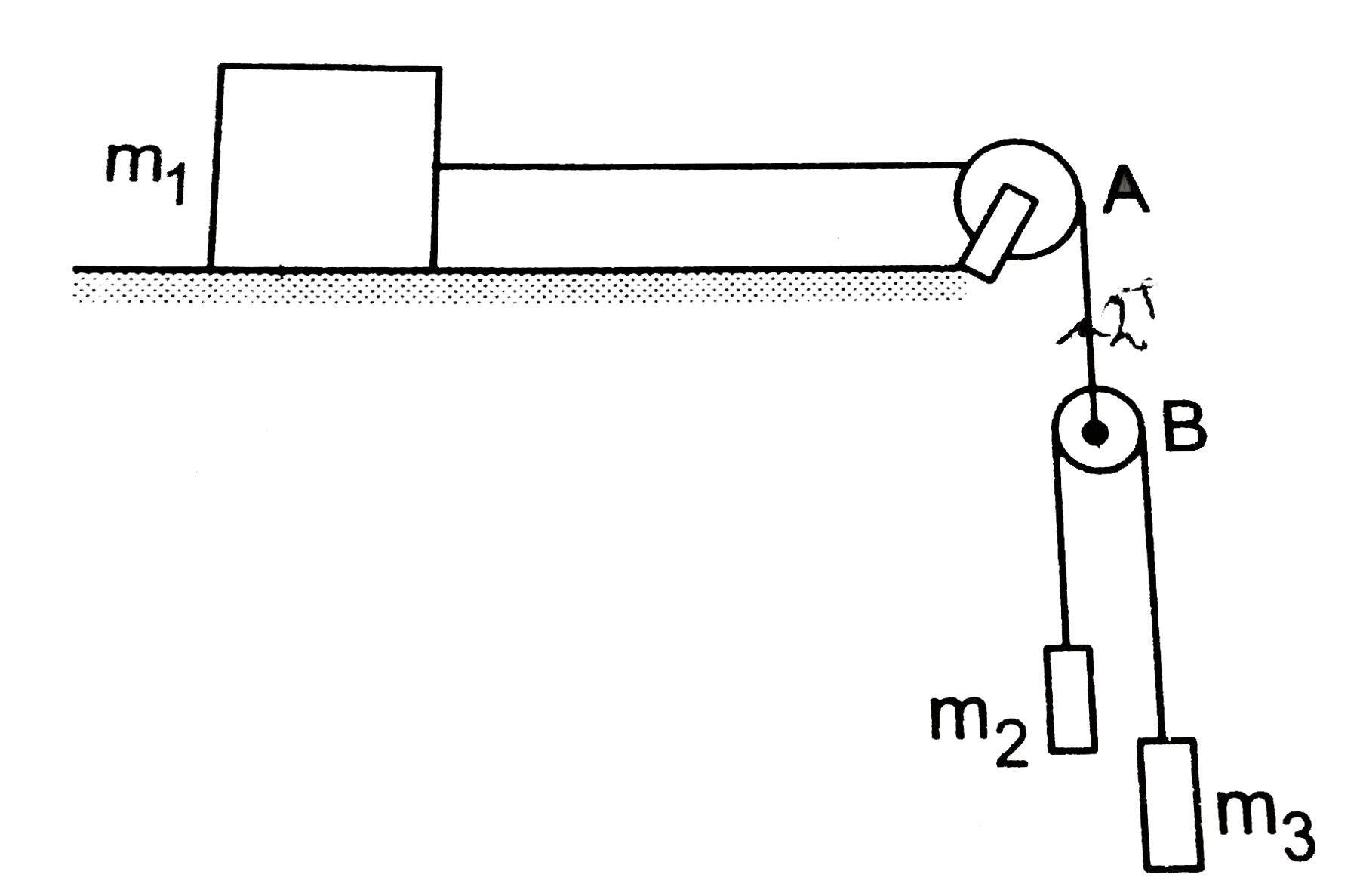
View SolutionThree blocks of masses m1,m2andm3 are connected as shown in the figure. All the surfaces are frictionless and the string and the pulleys are light. Find the acceleration of m1

View SolutionA small block B of mass m2 is placed on another block A of mass m1 A constant horizontal force F is applied to the block A. All the surfaces are assumed to be frictionless. Find the acceleration of center of mass of the system
View SolutionA block of mass m1 on a smooth, horizontal· swface is: connected to a second mass m2 by a light cord ovbr a light,: frictionless pulley as shown. (Neglect the mass of the cord and' of the pulley). A force of magnitude F0 is applied to mass m1· as shown. Neglect any friction.
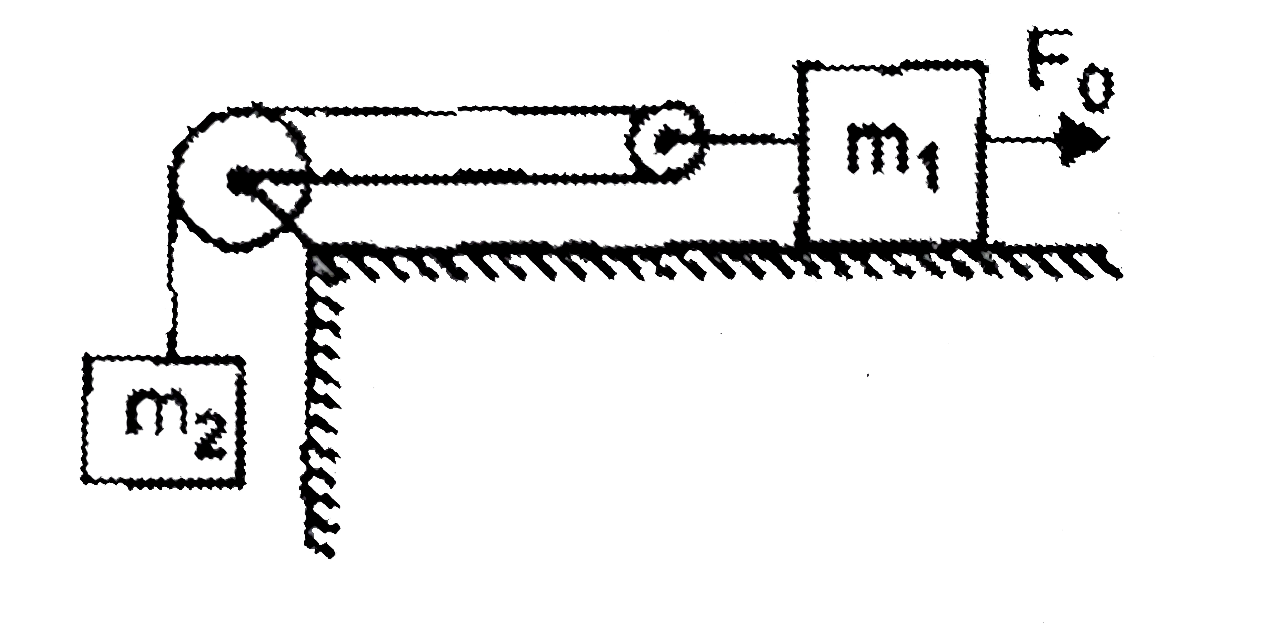
(a) Find the value of force F0 for which the sy!tem will be in equilibrium.
(b) Find the acceleration of masses andtensio~ in string if F0 has a value which is double of that foun,d in part (a).
View Solution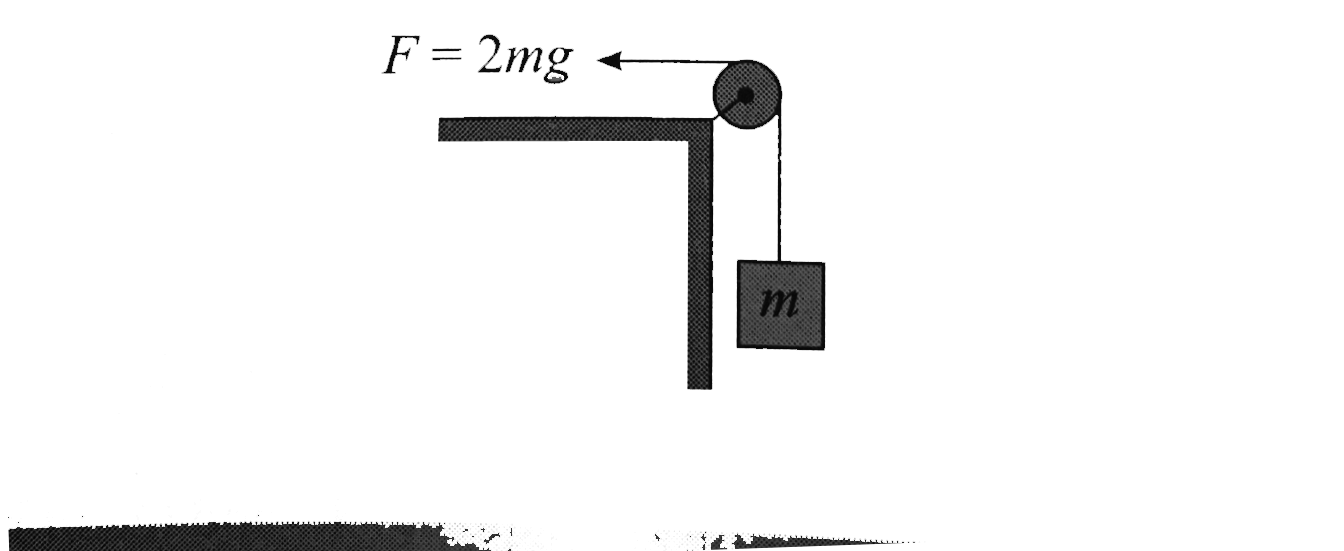 The block of mass m is being pulled by a horizontal force F=2mg applied to a string as shown in figure (Take g=10ms2). The pulley is massless and is fixed at the edge of an immovable table. What is the value of force exerted by the supporting table on the pulley (in Newton)
The block of mass m is being pulled by a horizontal force F=2mg applied to a string as shown in figure (Take g=10ms2). The pulley is massless and is fixed at the edge of an immovable table. What is the value of force exerted by the supporting table on the pulley (in Newton)
View Solution
